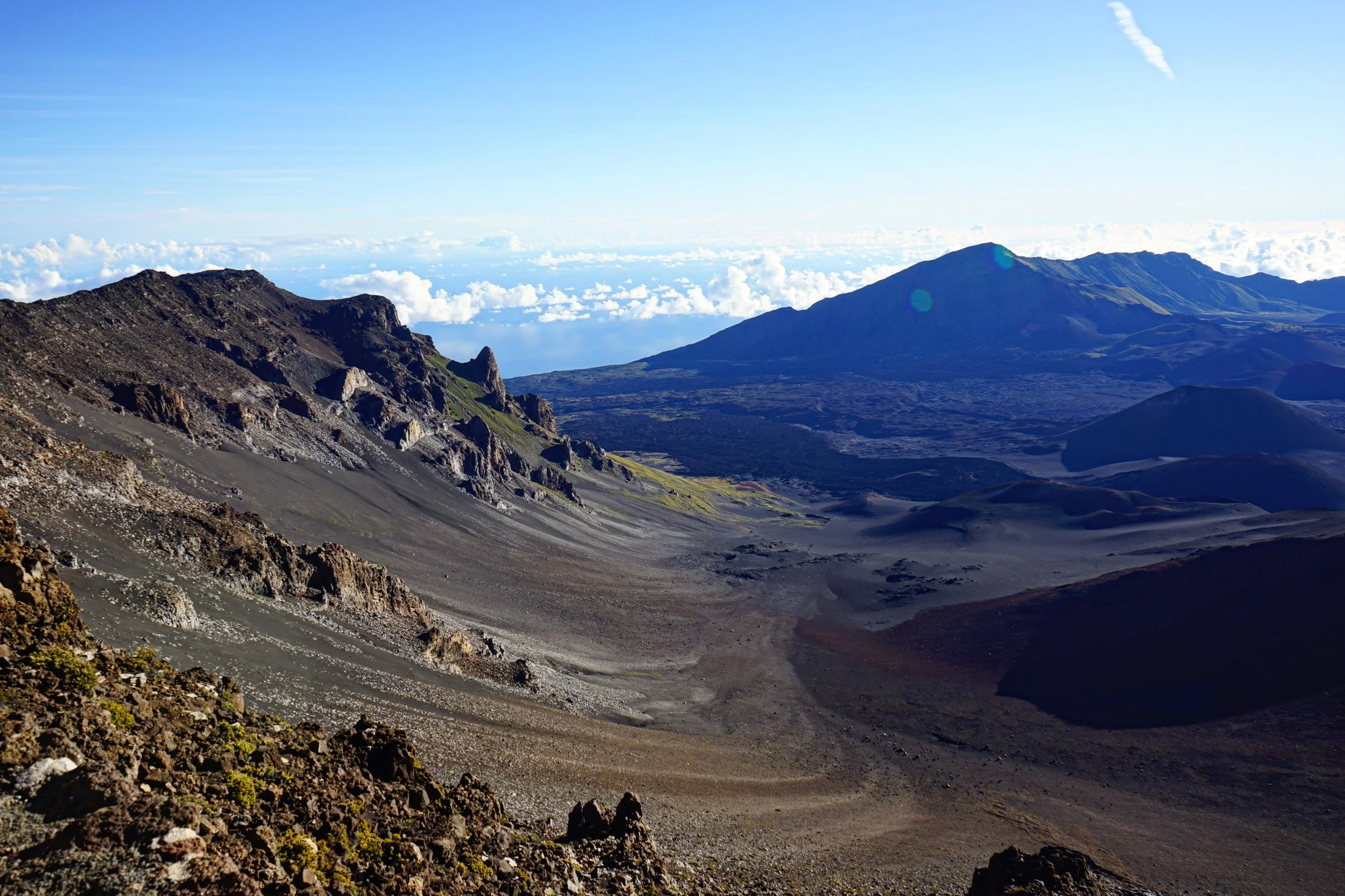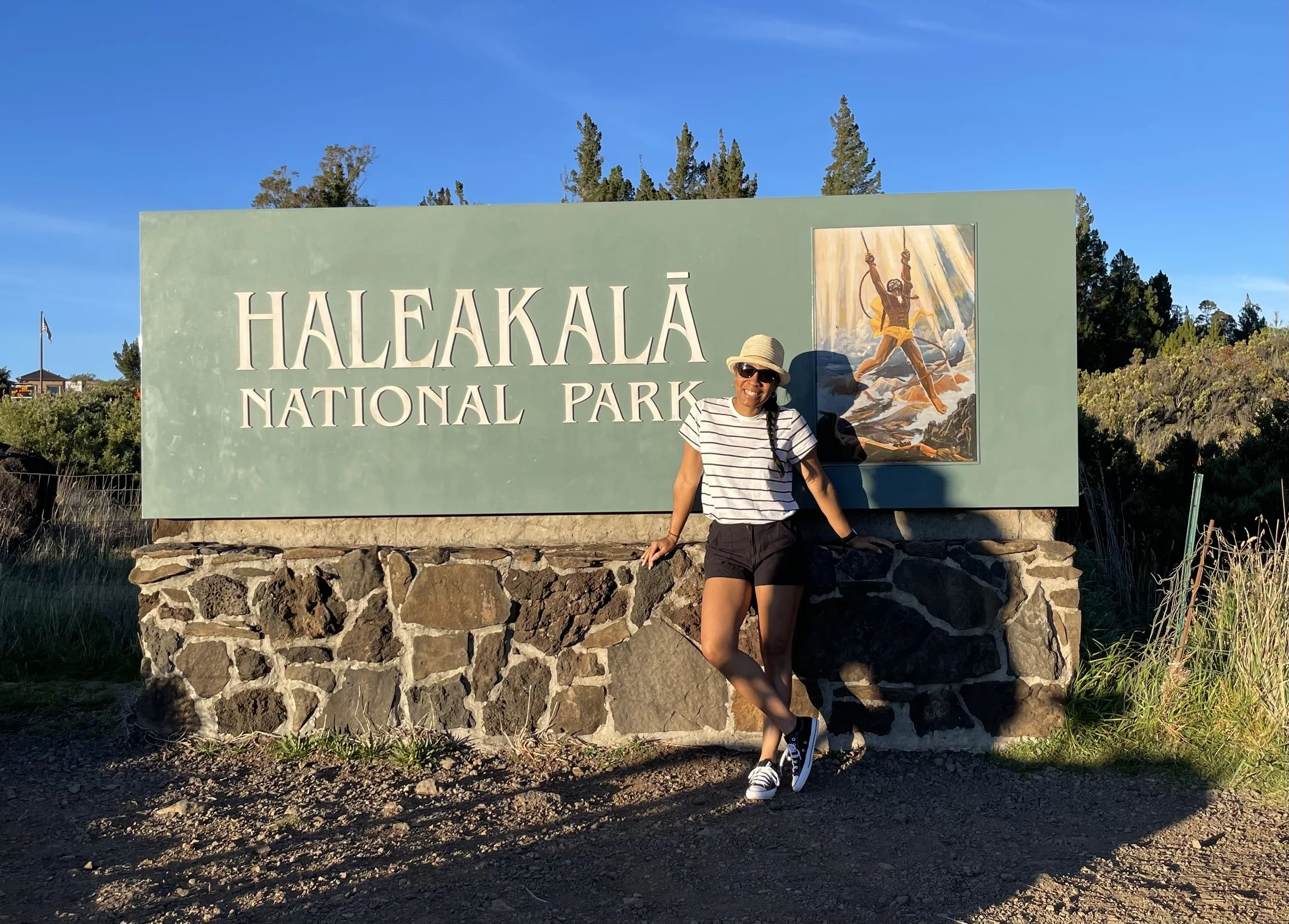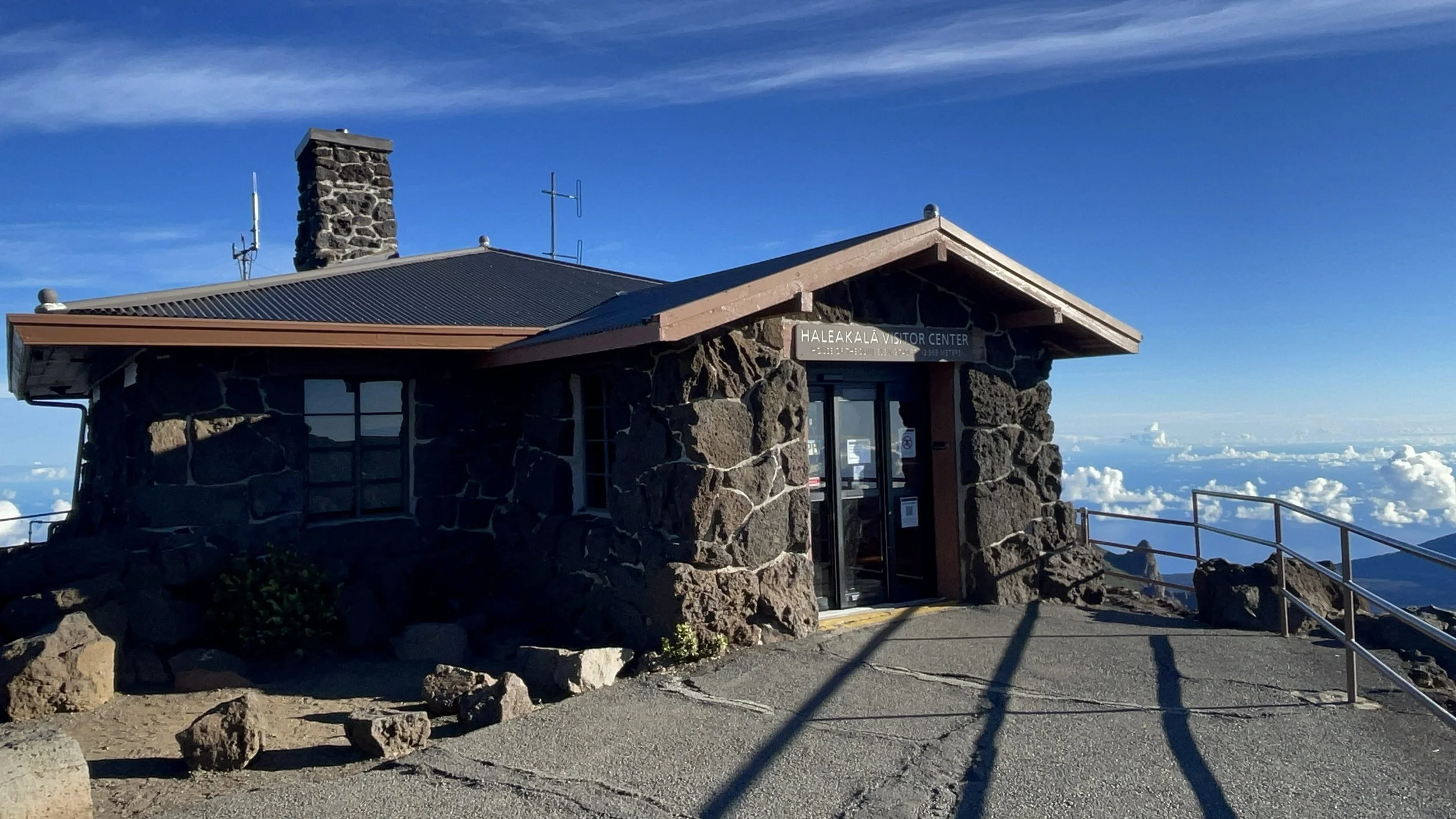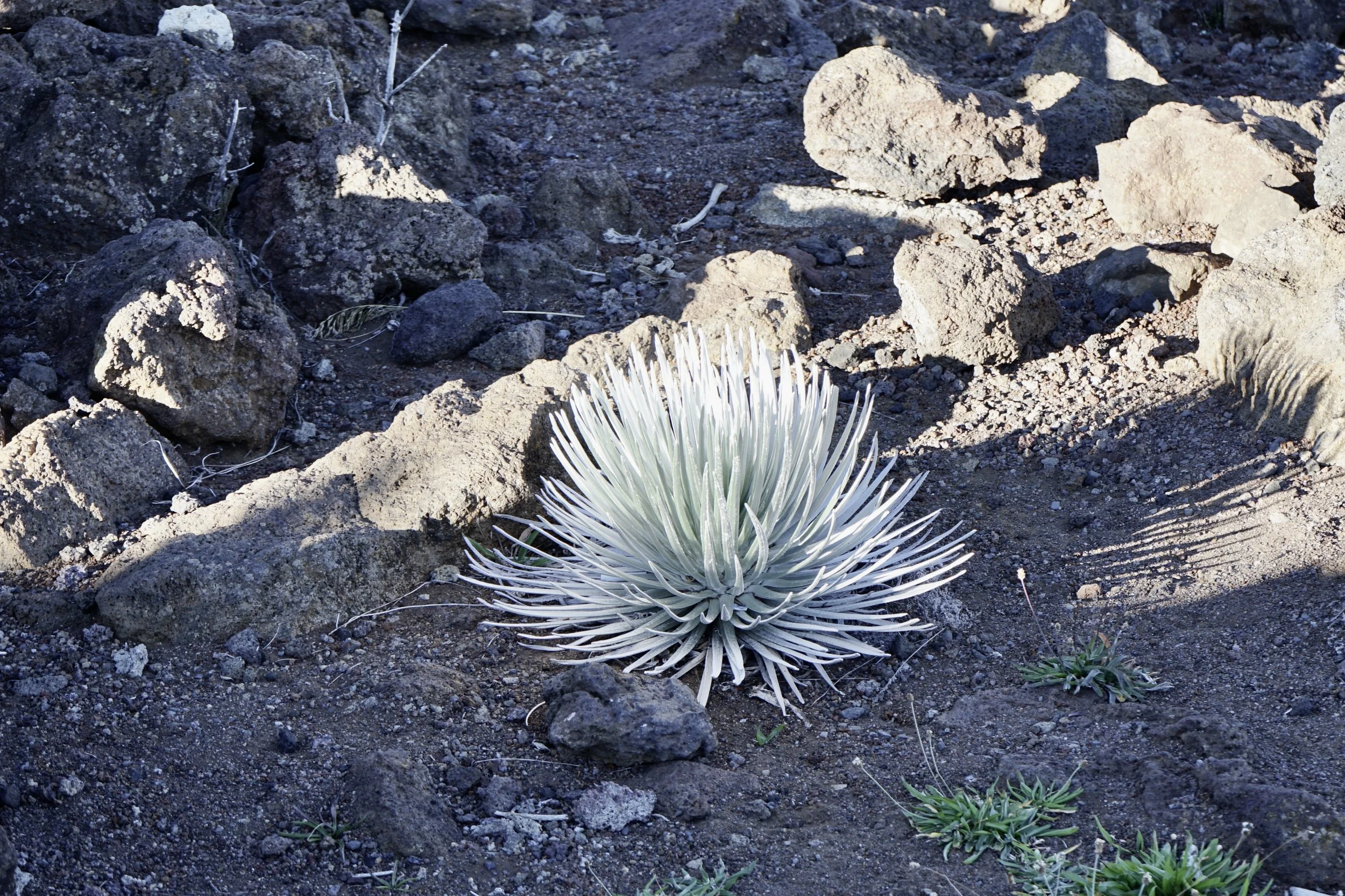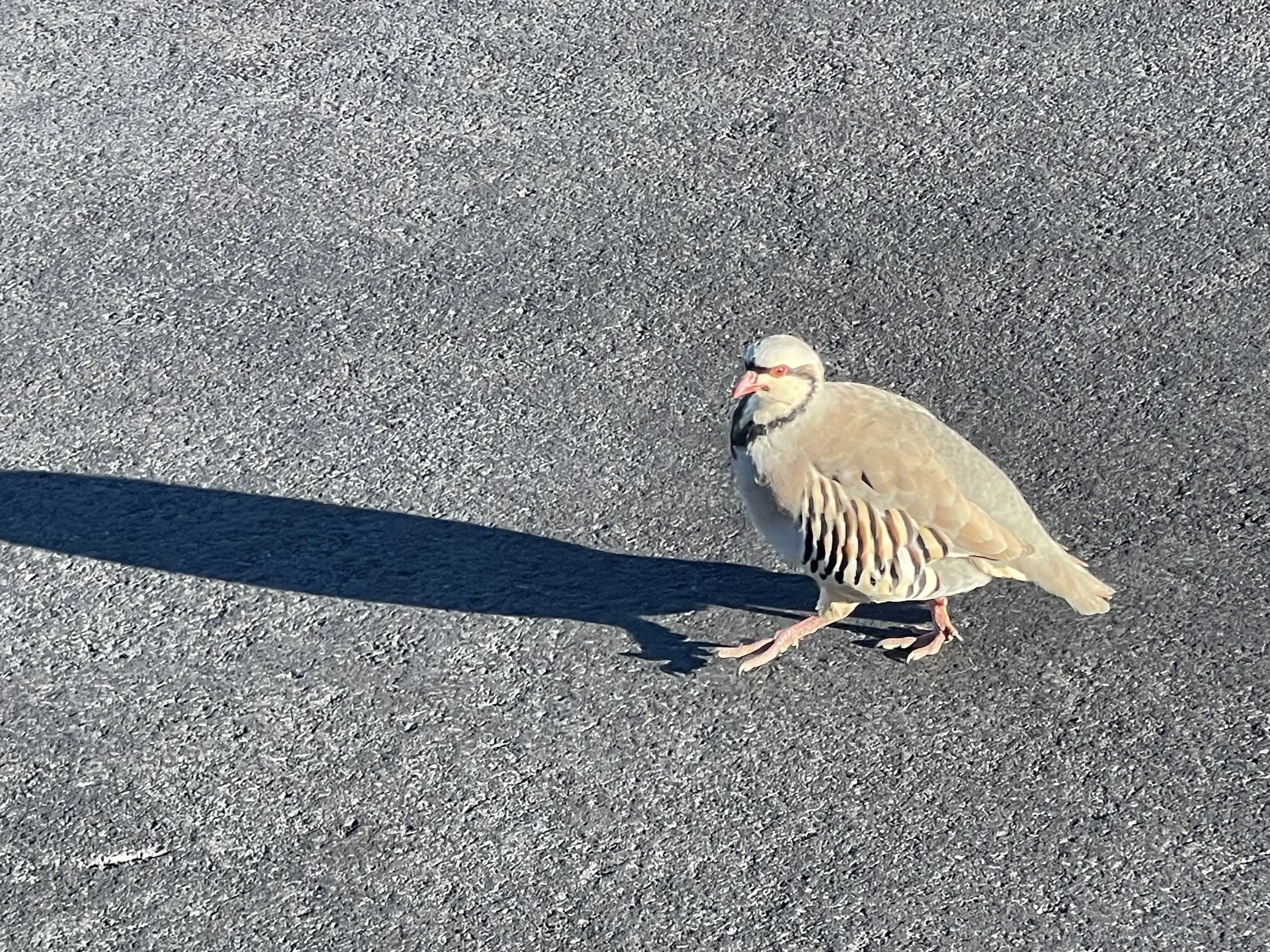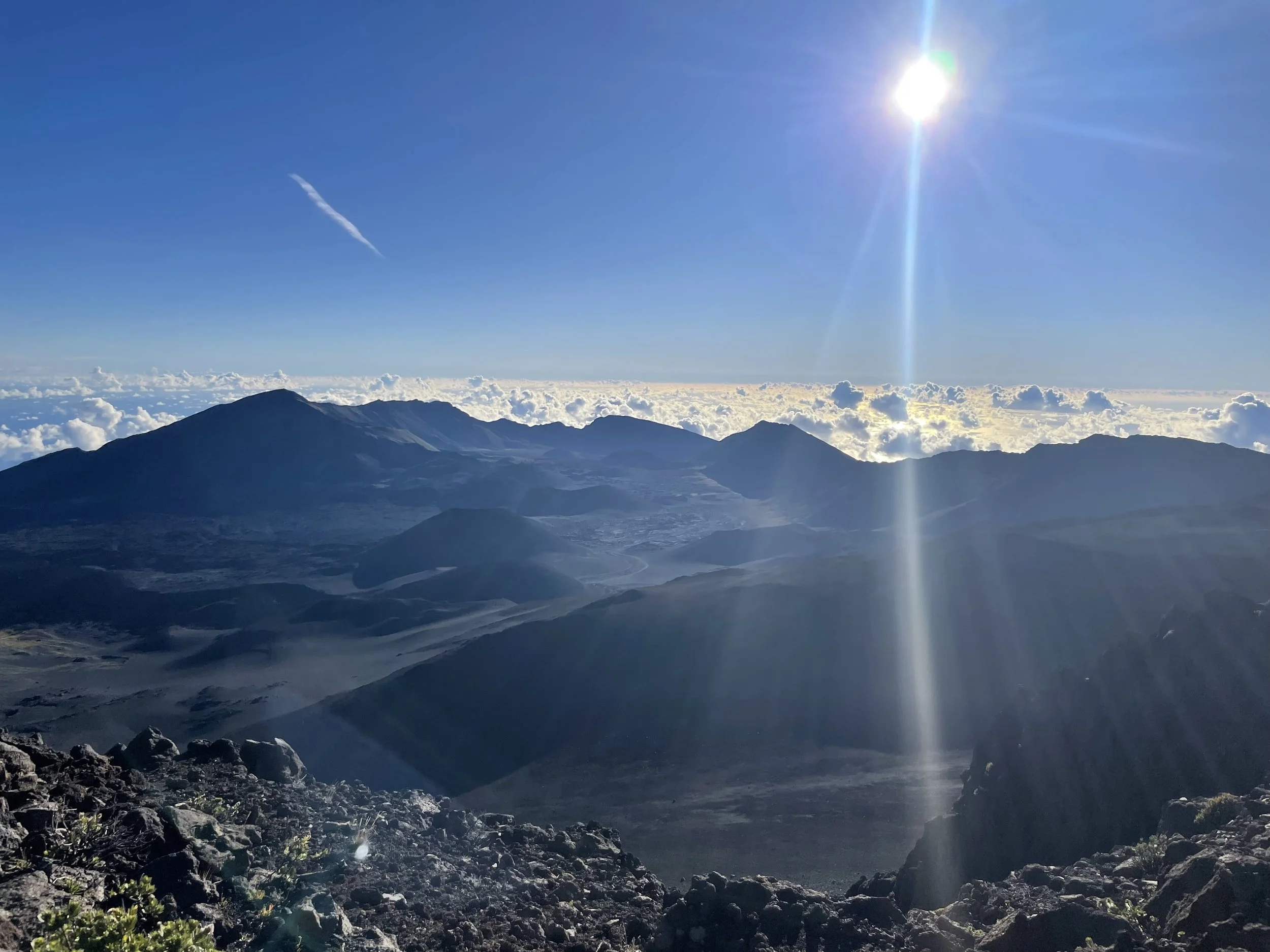#22 Haleakala National Park, Hawaii
My trip to Haleakalā National Park started early on an October morning. I was staying in Lāhainā, and while the island of Maui isn’t large, the drive to the summit still took a couple of hours. The road climbs steadily through switchbacks and high-altitude curves, offering scenic views of the valley below—once the sun comes up, that is.
The park is famous for its sunrise. People plan entire trips around it. I knew you needed a reservation to enter the park before 7:00 a.m., but I wasn’t trying to catch the sunrise—I just wanted to visit in the morning, without the crowds. If you do have the pass, you’re allowed in between 3:00 a.m. and 7:00 a.m.—but be warned: those roads are dark. Not “a few streetlights here and there” dark. Dark-dark. The kind of dark where the only light comes from your headlights and a few scattered stars, and every switchback feels like a trust fall.
I didn’t have a permit, and didn’t need one. I got to the entrance just a few minutes too early, sometime before 7. The ranger asked me if I had the sunrise pass. I didn’t. She politely told me I’d have to wait. So I parked near the sign with a couple of other travelers, took some photos, and watched the morning brighten while we waited for the clock to tick past 7:00.
Once we were cleared, I continued up the mountain to the Haleakalā Visitor Center, near the summit. The lower visitor center at Park Headquarters wasn’t open yet, so I kept driving.
At the top, it was cooler than I expected. I was in a T-shirt and shorts, and while I wouldn’t call it warm, I was fine for a quick visit. I took a few photos, got my passport stamp, looked out over the crater, and then headed back down. No sunrise, no crater hike, just a still, peaceful morning on the edge of a volcano.
And sometimes, that’s exactly enough.
What to Know Before You Go
Haleakalā’s Layout
The park is split into two districts:
Summit District – where the crater, high-elevation trails, and sunrise access are located.
Kīpahulu District – on the southeastern coast near Hāna, known for waterfalls and rainforest hikes.
These districts aren’t connected internally, so you’ll need to plan separate drives if you want to see both.
Getting There
From Kahului Airport: ~1.5 to 2 hours
From Lāhainā or Kihei: ~2 to 2.5 hours
To Kīpahulu District: ~2–3 hours via the Hāna Highway
Park entry: $30 per vehicle (valid for 3 days)
Sunrise Permits & Entry Details
If you plan to see the sunrise from the summit, you’ll need to:
Book a sunrise permit at recreation.gov.
Entry is only allowed between 3:00 a.m. and 7:00 a.m. with that permit.
The permit is separate from the park fee and often sells out weeks ahead.
Driving warning: That road is steep, winding, and pitch black before dawn. Not for everyone.
Haleakalā Visitor Center
Visitor Centers
Haleakalā Visitor Center (Summit) – Located at 9,740 ft near the crater. Small, quiet, and has passport stamps.
Park Headquarters Visitor Center (7,000 ft) – Opens later in the day, with more exhibits and a small bookstore.
Kīpahulu Visitor Center – On the island’s east side, near ʻOheʻo Gulch and rainforest trails.
Hikes and Trails
Pa Kaʻoao Trail
0.4 miles round trip
Quick walk to a cinder cone for panoramic crater views. Great for a short visit.
Sliding Sands Trail
Up to 11 miles round trip
Starts at the summit and drops into the crater. You don’t need to go far to feel the scale and stillness of the place.
Pīpīwai Trail (Kīpahulu District)
4 miles round trip
Through bamboo forest and past waterfalls, ending at 400-ft Waimoku Falls. Very different from the summit area.
Silverswords: One-of-a-Kind
One of the most distinctive things you’ll see near the summit is the Hawaiian silversword (Argyroxiphium sandwicense). These spiky, silvery plants grow only at high elevations on Haleakalā and parts of the Big Island.
They live for decades, bloom once, and then die. They’re striking—alien-looking—and incredibly fragile. Stay on the trail, and don’t get too close.
Chukar partridge
Wildlife
You might see:
Nēnē (Hawaiian goose) – Often seen near parking lots and visitor centers.
ʻUaʻu (Hawaiian petrel) – A rare seabird that nests near the summit.
Chukar partridges – Bold, fast-moving, and unbothered.
In Kīpahulu: more birds, insects, and the occasional freshwater shrimp in the streams.
Visiting the Kīpahulu District
If you have the time and patience for the Hāna Highway, the Kīpahulu side of the park is worth a visit. Expect a long drive with narrow curves, but also rainforest, waterfalls, and fewer people.
Highlights:
ʻOheʻo Gulch (Seven Sacred Pools)
Pīpīwai Trail through the bamboo forest
Coastal views and river crossings

